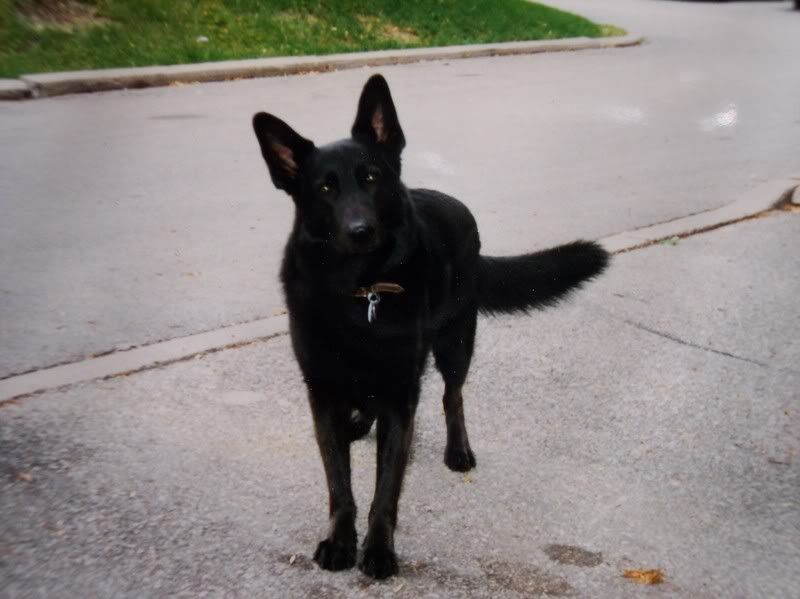One of the most important skills a person must learn when teaching a tracking dog is remembering where your track is. This becomes essential as soon as you move on from basic straight line tracks and introduce corners and articles. You must know where your track is. If you do not know where the track is, you are of no use to your dog. Over the years I have heard many different methods people use to mark important points on the track. Everything from flags, to coloured chalk, to large bolts tied with bright ribbon, to picking natural landscape markers have all been used by tracklayers. Ask anyone who tracks regularly with their dog, and I'm sure you will hear a few other suggestions. Certainly, on a dewy morning while tracking on short grass, one can often clearly see the footprints of the track that has been laid. Especially if the track is run relatively soon after laying it. The trouble begins when you cannot see your track... how will you remember where it goes? Where exactly the corners are? Where exactly you dropped articles? These are all skills we must master as track layers if we are to be successful at teaching a tracking dog. Dogs are very observant creatures, and if we use artificial markers on the track, such as flags, it won't take long for your dog to become "flag smart", and quickly realize that a flag must mean something; a turn, an article. Also, when placing a flag or other object along the track as a marker, this flag will undoubtedly have your scent on it, something that will clearly draw the dog's attention to it. Dogs should never be faulted for "indicating" these objects, as we spend a considerable amount of time teaching our dogs that articles, any article, with human scent on it should be indicated along the track. So, what do we do about this? One of the best ways, albeit most challenging, to remember where our track lies is to teach ourselves to use natural landscape markers while laying a track. This is much, much easier said than done. It can be especially tricky on large fields that have mostly uniform vegetation coverage. Things get even more complicated if we are laying more than one track for more than one dog in a given training session. Imagine laying two or more tracks, with multiple corners and multiple articles along each track... that is a lot of pressure, especially of we are using trees off in the distance and random weeds out in the field for "natural" markers. It has been on more than one occasion that I have forgotton which weed was marking a corner, and which weed was marking an article... sometimes my dog does it correctly anyway, sometimes no. In the latter case, if I cannot remember what was supposed to be happening at that point on the track, I have failed my dog. This is definitely a skill that needs to be practiced and nearly perfected. I still use artificial markers on my training tracks when needed, as I believe it is still more important to know, really know, where your track is, than to risk losing the track or forgetting where corners or articles are on the track - the latter two being absolutely crucial.
Below you can clearly see the footsteps of the track on the short grass on this dewy morning.

This field below would be a difficult one to pick out natural landscape markers due to its mostly uniform vegetation. The trees off in the distance would be useful for distance markers, especially since they turning colour.





2 comments:
I've never done any tracking, so this is a shot in the dark. If you're using artificial markers (flags) maybe you could not put it directly on the track, but maybe two foot to the side (you'd have to be good at judging distances). If the track is straight lines then it should work. The problem would be getting the flags out without disturbing the scent track. I'm way out of my element. -shrug- Or maybe when working at home put out a bunch of random flags, then later lay your scent and maybe this would prevent the dog from becoming flag smart. It would be just another random object in the environment like a rock or bush.
I dabbled in tracking a bit with my gsd mix but found remembering the track very difficult. It became frustrating because it meant I had let my dog down. I was using natural landscape markers and kept forgetting which tree or post I had selected to mark the turn. I'd like to get back into tracking at some point and might just go with flags unless my memory suddenly improves tenfold!
Post a Comment